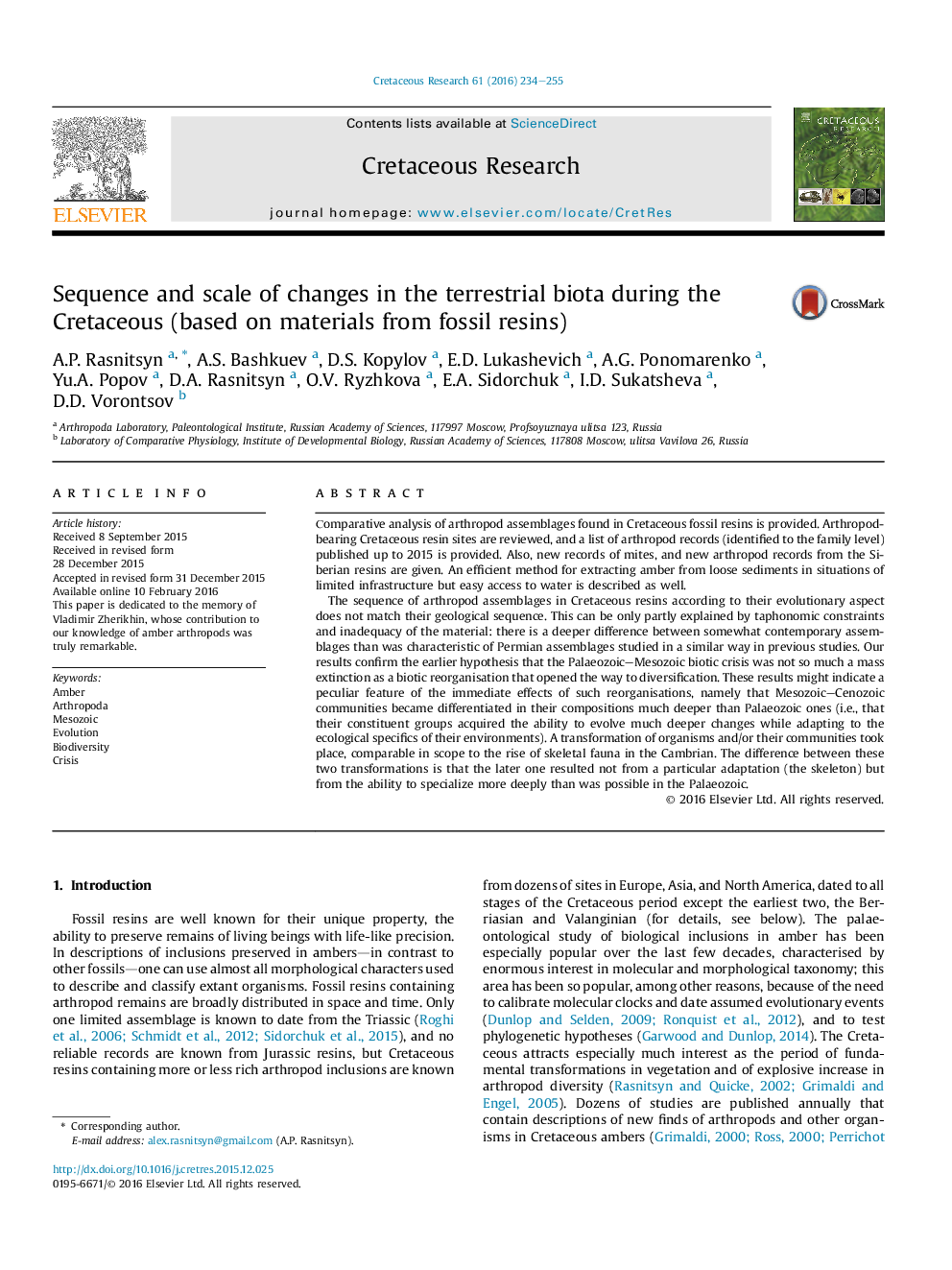| کد مقاله | کد نشریه | سال انتشار | مقاله انگلیسی | نسخه تمام متن |
|---|---|---|---|---|
| 4746741 | 1642062 | 2016 | 22 صفحه PDF | دانلود رایگان |
Сomparative analysis of arthropod assemblages found in Cretaceous fossil resins is provided. Arthropod-bearing Cretaceous resin sites are reviewed, and a list of arthropod records (identified to the family level) published up to 2015 is provided. Also, new records of mites, and new arthropod records from the Siberian resins are given. An efficient method for extracting amber from loose sediments in situations of limited infrastructure but easy access to water is described as well.The sequence of arthropod assemblages in Cretaceous resins according to their evolutionary aspect does not match their geological sequence. This can be only partly explained by taphonomic constraints and inadequacy of the material: there is a deeper difference between somewhat contemporary assemblages than was characteristic of Permian assemblages studied in a similar way in previous studies. Our results confirm the earlier hypothesis that the Palaeozoic–Mesozoic biotic crisis was not so much a mass extinction as a biotic reorganisation that opened the way to diversification. These results might indicate a peculiar feature of the immediate effects of such reorganisations, namely that Mesozoic–Cenozoic communities became differentiated in their compositions much deeper than Palaeozoic ones (i.e., that their constituent groups acquired the ability to evolve much deeper changes while adapting to the ecological specifics of their environments). A transformation of organisms and/or their communities took place, comparable in scope to the rise of skeletal fauna in the Cambrian. The difference between these two transformations is that the later one resulted not from a particular adaptation (the skeleton) but from the ability to specialize more deeply than was possible in the Palaeozoic.
Journal: Cretaceous Research - Volume 61, June 2016, Pages 234–255
